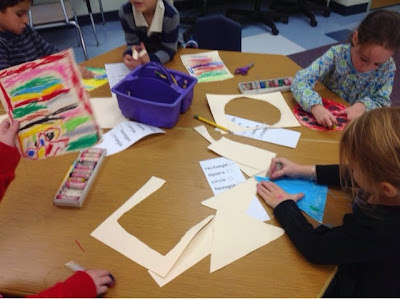Mr. Prazar wanted them to observe the many little threads at the way back of the nose. He explained that those threads were smell receptors that help the coyote smell really well.
Mr. Prazar then asked how many people had dogs and if their noses were dry or wet. WET! was the response from them all. The students then learned that dogs (and coyotes) have a really great sense of smell because when their noses are wet, the smell becomes stronger and the animal is able to find or track food using their sense of smell.
Well, the second time around...the smell was much stronger for most of them! Some who couldn't smell anything before were finally able to detect the smell and others smelled it much stronger the second time. When Mr. Prazar finally asked what they had smelled, they all knew it was chocolate!
Next, Mr. Prazar showed the kids how animals use their sense of smell to detect danger or to mark their territory in the wild. Deer use their antlers to rub their smell onto tress so that other deer know to stay away. They also learned that antlers fall off each year and new ones grow back in their place.
The students got to touch the antlers and Mr. Prazar said he found this set in his back yard. So, look around your yard, you might find your own set!
Mr. Prazar shared with us that most animals don't use their paws to feel things, they use their whiskers instead. Cats use their whiskers to detect if a mouse is dead or still moving by curling their whiskers around the mouse. Other animals use their whiskers at night to see like moles and mice.
Unlike other animals, we then got to use our own sense of touch to detect what was inside a box.
The kids did a great job noticing all of the objects...a pine cone.
A leaf....A rock...and pine needles!
We then got a chance to go outside to use our sense of touch and smell in the wild, just like animals do!
Mr. Prazar had the kids partner up and lead each other with eyes closed to a tree.
The kids who had their eyes closed had to feel the tree, with their eyes still closed. Once their eyes were opened, they had to find the tree their partner had brought them to.
The students finished off their time with Mr. Prazar by using their sense of smell one last time. He had them smell another canister and then they had to find the item outside. The students knew right away what it was - leaves!
The students (and me!) had a great time with Mr. Prazar and learning about how animals use their senses to explore and live in the world around us!
















































